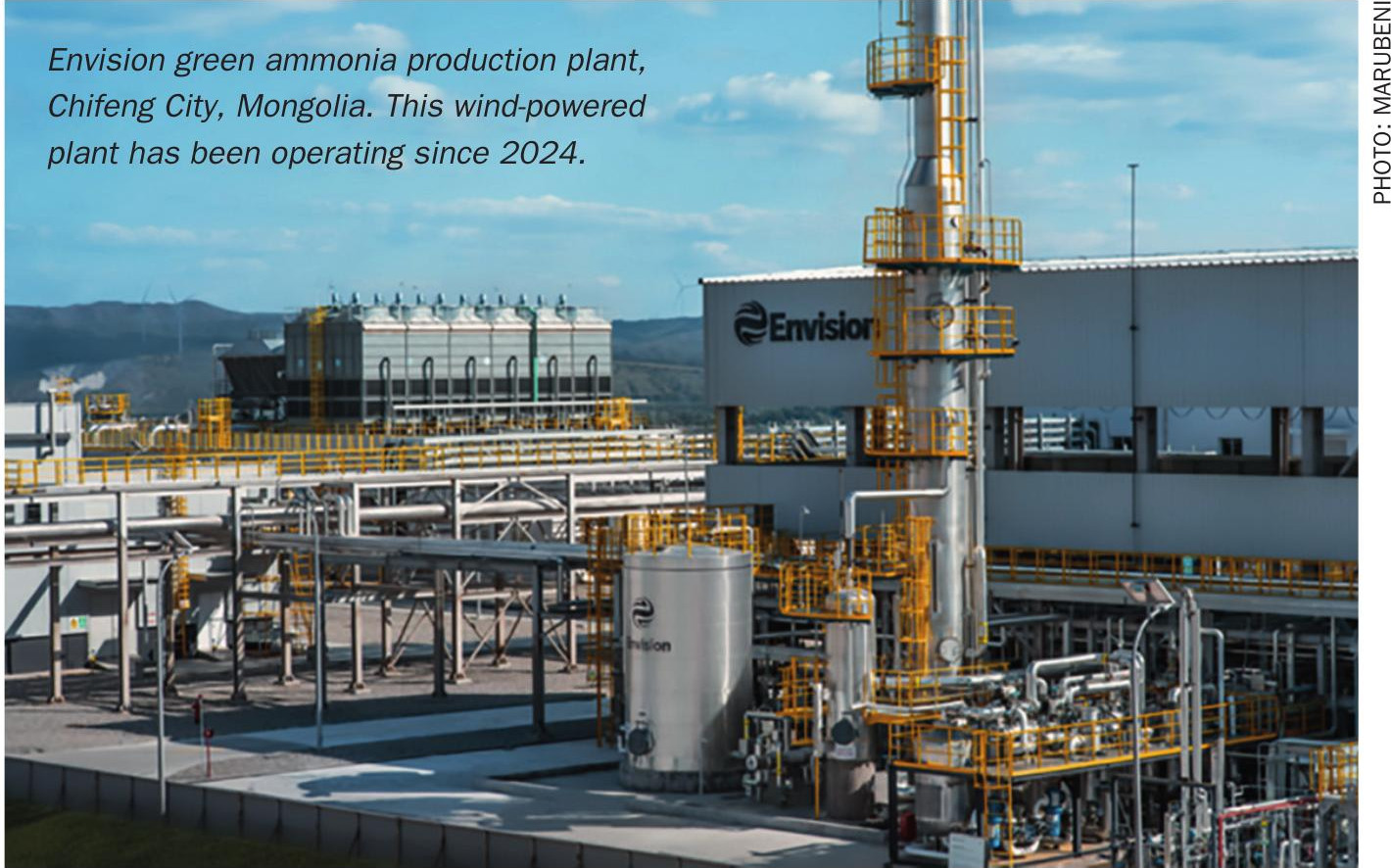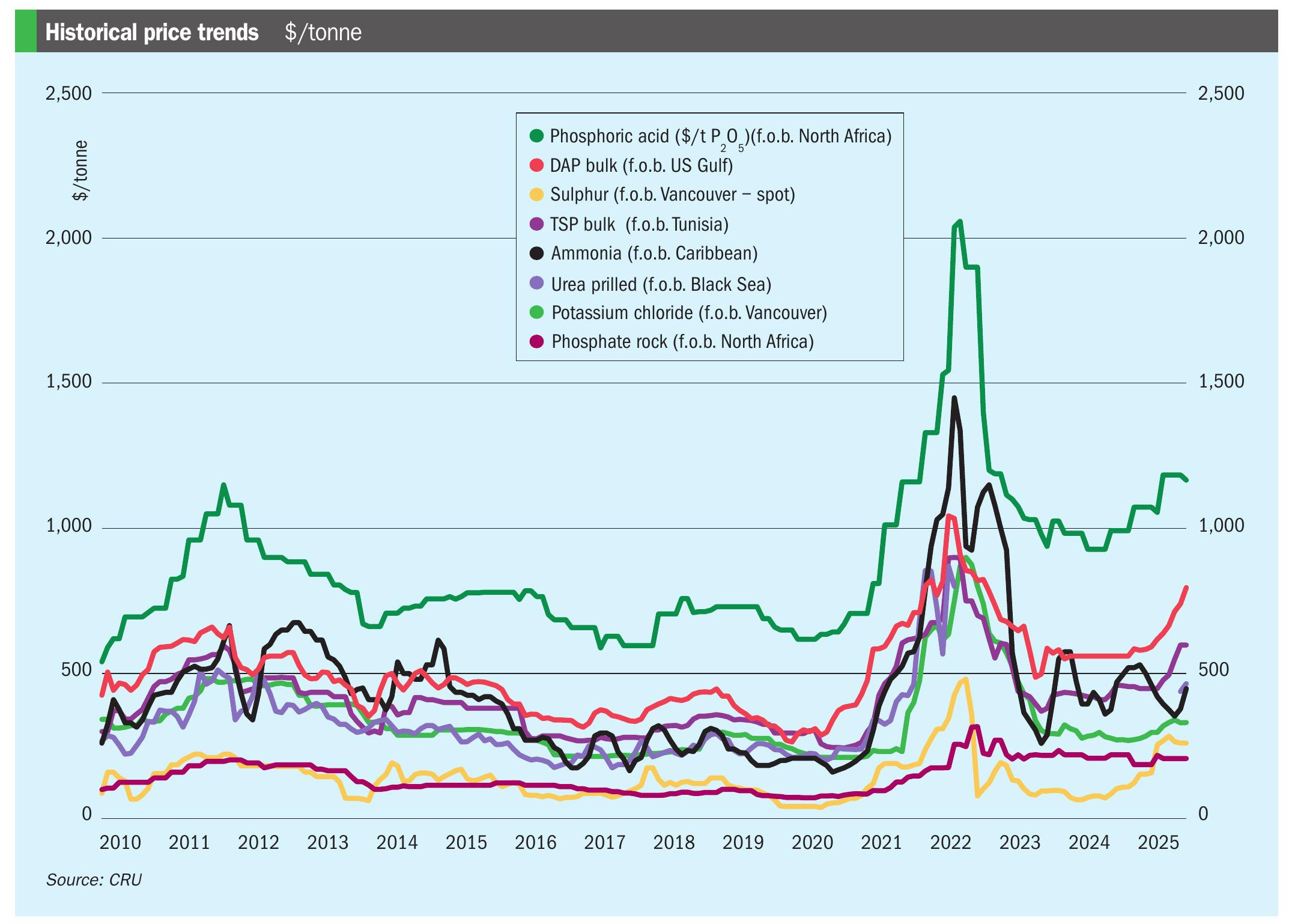Nitrogen+Syngas 372 Jul-Aug 2021

31 July 2021
Price trends
Price trends
Market Insight courtesy of Argus Media
NITROGEN
Recent ammonia market developments include a rise in the Tampa ammonia contract price to $585/t c.fr, continuing outages in the Middle East – mainly Saudi Arabia – and Ukraine exports potentially being under threat. A $50/t jump in the Tampa contract price for July shipments removed any doubt over whether there would be a slowdown in the latest price rally over the next few weeks. Cargoes continue to be lined up from the west to ship to supply customers short of product in east Asia. Buyers remained out of the market towards the end of June, weighing up potential options if the market remains tight into August.
There is still as yet no official word from Saudi Arabia over how long exports will be impacted from Ras al Khair following the fire which damaged the Ma’aden ammonia plant there, affecting 1.1 million t/a of export capacity. Traders are preparing for the region to be below capacity until August. Buyers of Saudi ammonia are facing the prospect of buying more spot ammonia, which is supporting delivered offers above last done business.
US Gulf cargoes are expected to become available next month as the regions moves further into its off-season and maintenance starts on the NuStar pipeline, but delayed turnarounds from the start of the year due to the poor weather conditions may restrict availability. In general, August offers an opportunity for some respite to the market, and lower pricing if Saudi production starts to ramp up.
Much of the urea market has been on hold toward the latter stages of June, waiting to see prices from the 24th June Indian tender. If the prices rumoured to have been offered are confirmed, the wait will have been well worth it for suppliers. Initial indications are that offer prices in the RCF tender were all above $500/t c.fr, with east coast prices rumoured close to $510/t c.fr. This would reflect netback prices above $470/t f.o.b. in China and the Middle East, marking a new step up in price.
Ethiopia is also tendering to buy over 200,000 tonnes of urea for July, squeezing available supply and most likely facing higher prices than India.
Markets in the western hemisphere have been inactive, but buyers face a new round of price increases, not only because of higher f.o.b. prices but also because freight has jumped again from the Middle East and FSU/Mediterranean origins. Recent market drivers include Indian buying and urea availability for the RCF tender, flat recent prices in Brazil, and Chinese government pressure to curtail exports due to concerns about higher domestic urea prices in China. If this does occur it will reduce availability still further. Overall market supply looks to be very tight for July and it seems that further price increases may be on the cards, especially East of Suez.

END OF MONTH SPOT PRICES
natural gas

ammonia

urea

diammonium phosphate







